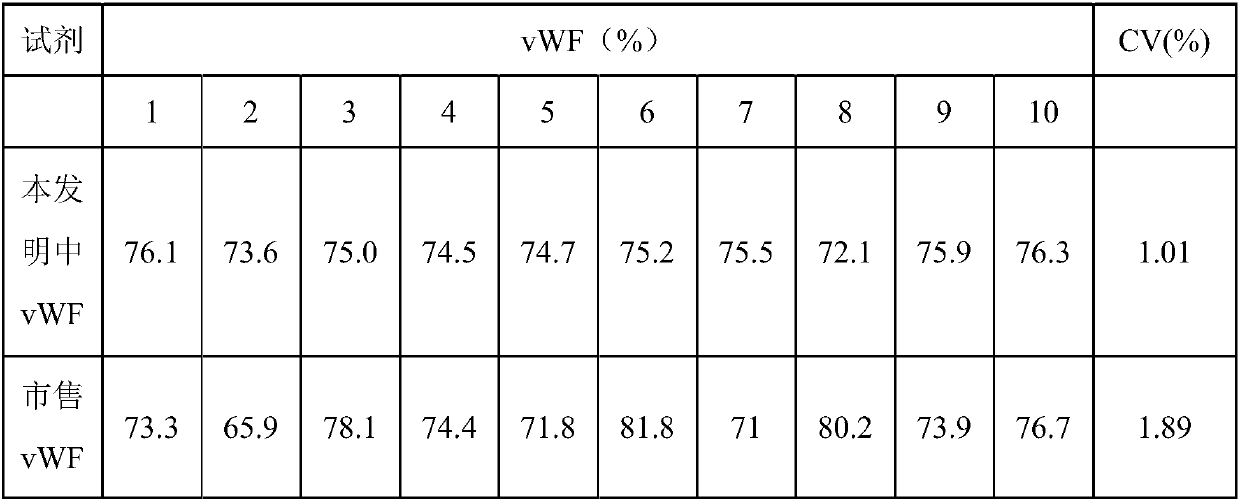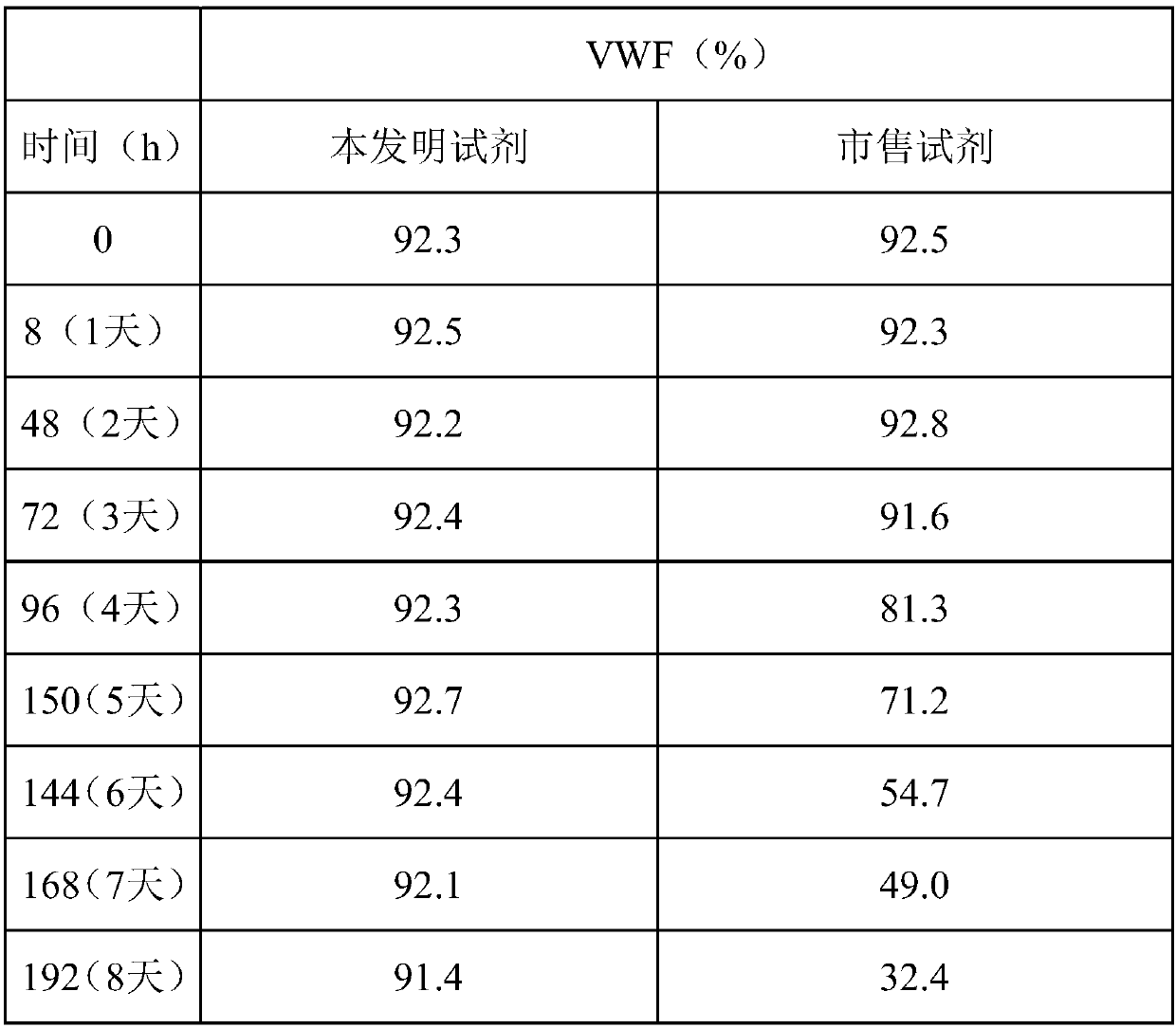Vascular hemophilia factor detection reagent, preparation method and application thereof
A hemophilia factor and detection reagent technology, applied in the field of clinical medical detection, can solve the problems of lack of reliability, cumbersome detection, low repeatability, etc., and achieve the effects of improving coupling efficiency, accurate test results, and stable detection
- Summary
- Abstract
- Description
- Claims
- Application Information
AI Technical Summary
Problems solved by technology
Method used
Image
Examples
Embodiment 1
[0052] The preparation method of the detection reagent of von Willebrand factor in this embodiment comprises the following steps:
[0053] (1) Preparation of R1: first prepare the MES buffer solution with a concentration of 50 mM, then add 0.5% NaCl by mass volume percentage and 0.08% Triton X-100 by mass volume percentage, adjust the pH to 7.2 after mixing .
[0054] (2) Preparation of R2: The preparation of the 150nm latex microsphere system comprises the following steps: 100mL of 150nm latex microspheres 100mL of 150nm latex microspheres with a mass volume percentage of 2% and a mass volume percentage of 5% with a 37°C constant temperature shaker Shake for 25 minutes, centrifuge the activated microspheres at 3000 rpm for 10 minutes, discard the supernatant, and wash 5 times with pH6.5-7.0 MES buffer; The cloned antibody mixture was incubated at 37°C for 5 hours, and washed 5 times with MES buffer solution of pH 6.5-7.0 after incubation; then added MES buffer solution of pH...
Embodiment 2
[0058] The preparation method of the detection reagent of von Willebrand factor in this embodiment comprises the following steps:
[0059] (1) Preparation of R1: first prepare the MES buffer solution with a concentration of 10 mM, then add 0.1% NaCl by mass volume percentage and 0.01% Triton X-100 by mass volume percentage, adjust the pH to 6.8 after mixing .
[0060] (2) Preparation of R2: The preparation of the 150nm latex microsphere system comprises the following steps: 100mL of 150nm latex microspheres with a mass volume percentage of 1% and 150nm latex microspheres of 15% by mass volume are placed on a 37°C constant temperature shaker Shake for 30 minutes, centrifuge the activated microspheres at 3000 rpm for 10 minutes, discard the supernatant, and wash 4 times with pH6.5-7.0 MES buffer; The cloned antibody mixture was incubated at 37°C for 5 hours, and washed once with MES buffer of pH 6.5-7.0 after incubation; then MES buffer of pH 6.5-7.0 containing 0.1% bovine seru...
Embodiment 3
[0064] The preparation method of the detection reagent of von Willebrand factor in this embodiment comprises the following steps:
[0065] (1) Preparation of R1: first prepare the MES buffer solution with a concentration of 200 mM, then add 3% NaCl by mass volume percentage and 1% Triton X-100 by mass volume percentage, adjust the pH to 7.4 after mixing .
[0066] (2) Preparation of R2: The preparation of the 150nm latex microsphere system comprises the following steps: 100mL of 100mL of 150nm latex microspheres with a mass volume percentage of 10% by mass volume percentage and 100mL of 150nm latex microspheres by mass volume percentage at 37°C on a constant temperature shaker Shake for 20 minutes, centrifuge the activated microspheres at 3000 rpm for 10 minutes, discard the supernatant, and wash 5 times with pH6.5-7.0 MES buffer; The cloned antibody mixture was incubated at 37°C for 5 hours, and washed 5 times with MES buffer solution of pH 6.5-7.0 after incubation; then, ME...
PUM
 Login to View More
Login to View More Abstract
Description
Claims
Application Information
 Login to View More
Login to View More - R&D
- Intellectual Property
- Life Sciences
- Materials
- Tech Scout
- Unparalleled Data Quality
- Higher Quality Content
- 60% Fewer Hallucinations
Browse by: Latest US Patents, China's latest patents, Technical Efficacy Thesaurus, Application Domain, Technology Topic, Popular Technical Reports.
© 2025 PatSnap. All rights reserved.Legal|Privacy policy|Modern Slavery Act Transparency Statement|Sitemap|About US| Contact US: help@patsnap.com



